Install the app
How to install the app on iOS
Follow along with the video below to see how to install our site as a web app on your home screen.

Note: this_feature_currently_requires_accessing_site_using_safari
You are using an out of date browser. It may not display this or other websites correctly.
You should upgrade or use an alternative browser.
You should upgrade or use an alternative browser.
Ebooks and Audiobooks Collection
OP
Member
LEVEL 5
70 XP
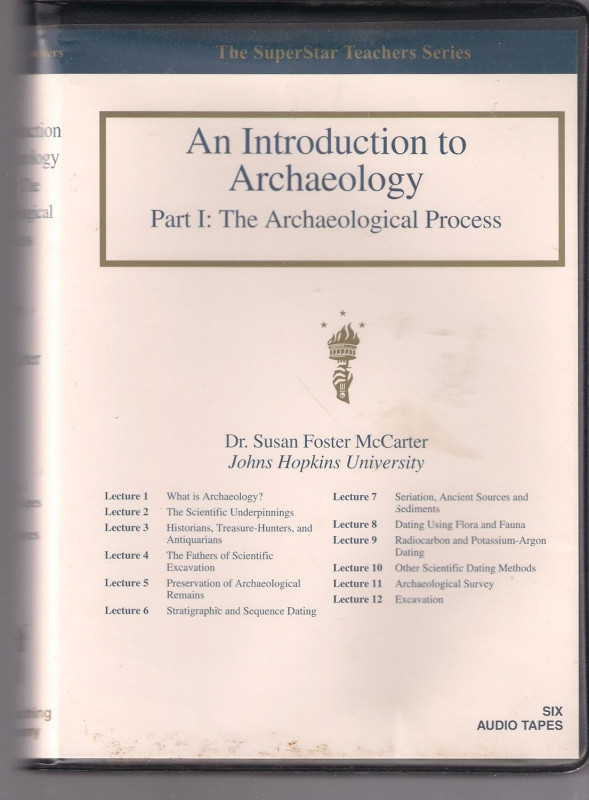
An Introduction to Archaeology [TTC Audio]
English | 2004 | 18 hrs and 18 mins | MP3 | 226 MB
Introduction to Archaeology
(24 lectures, 45 minutes/lecture)
Course No. 193
Taught by Susan Foster McCarter
Johns Hopkins University
Ph.D., Brandeis University
Have you ever found yourself, perhaps after visiting a museum, an art gallery, or a historic site, wanting to know more about a long-lost civilization, a fortress that was bitterly fought over ages ago, or a ruined city sitting mute but poignant in the midst of what was once a thriving human world but is now a trackless jungle or a lonely plain?
If such experiences have gripped your imagination, then you have probably also wondered how, more generally, groups of human beings dealt at different times and places with the challenges of their environments, and how, in turn, the environment shaped past peoples across the unchronicled millennia of human prehistory.
Writing was invented only about 5,000 years ago. Since scientists can trace humanity's origins back 500 times as far to almost 2.5 million years ago sometimes the desire to explore questions like these cannot be satisfied by the pages of written history. The place for you to turn, as this course will show, is to archaeology.
Part meticulous empirical science and part inspired detective work, archaeology seeks answers about the obscure reaches of the past by using techniques and insights from a wealth of other fields, including geology, anthropology, history, physics, art history, and even philosophy along with long hours in the field studying the physical traces that our forebears have left behind.
"Windows Into the Past"
Your guide to the study of archaeology is Dr. Susan Foster McCarter (Ph.D., Brandeis University), an affiliate of the Department of Near Eastern Studies at Johns Hopkins University. She also lectures for the Smithsonian Institution's Resident Associates Program.
With decades of teaching and field experience as well as a special scholarly interest in prehistoric Aegean sites on Cyprus and Crete, Dr. McCarter shares with you her expertise and her love for finding "windows into the past."
"The goals of the course are to explain key archaeological concepts and practices, and to illustrate how archaeologists reconstruct the past, especially the prehistoric past (before the invention of writing)," says Dr. McCarter. "Archaeology is a science, and archaeologists are trained in many subdisciplines. They reach their conclusions by careful research. This is not true of pseudoarchaeologists, who use selected archaeological information to support preconceived ideas about the past."
Archaeology is a recent science; until about 100 years ago, all excavation was licensed looting. But some collectors were as interested in understanding the ancient cultures that had produced the works of art they collected as they were in the art itself. We refer to such collectors as antiquarians people who recovered ancient remains more to preserve the past than for personal enjoyment.
The first scientific excavation occurred in 1784 when Thomas Jefferson (1743-1826), 17 years before he became president, excavated native burial mounds according to the Law of Superposition (the earliest remains are those which were laid down first, and the latest remains are those which were laid down last). He recorded everything he found and published his data. Essentially, Jefferson conducted a modern scientific excavation.
As the 19th century progressed, antiquarianism set the stage for scientific archaeology. You will learn about General Augustus Lane-Fox Pitt-Rivers, Sir Flinders Petrie, Sir Arthur Evans, Alfred Kidder, and George Bass British and American founders of the scientific methods of archaeology.
Scientific Archaeology has three goals:
to describe and classify what is found
to figure out the function of what is found
to explain how and why ancient cultures changed over time.
Discover the Archaeological Process
Along with history and basic concepts, much of the course's first half, "The Archaeological Process," introduces you to the ways in which archaeologists find, excavate, preserve, and date valuable sites (using everything from tree rings and changing pottery styles to atomic technology) and the assemblages of artifacts associated with them. You learn about such topics as:
why archaeological surveys must cover the same ground at several different times of day
how archaeologists learn volumes from discards and garbage
why ceramic artifacts are so important to the study of the past
how the presence of glaciers assists archaeological research in Scandinavia.
Some sites, such as the pyramids in Egypt, have always been known. But most sites are far less conspicuous. The method used by archaeologists to find over 70 percent of sites is called archaeological reconnaissance, or site survey.
Survey begins with gathering published information about the area to be studied. Archaeologists then go to the area and walk over it, recording what they find. Surveys can be enhanced by the use of aerial photography and various scientific sensing methods. An archaeologist uses the information gathered through the survey to decide whether to excavate, and if so, where.
In addition to surveying, Dr. McCarter discusses in depth topics such as:
scientific dating methods
analyzing the meaning of remains
methods of excavation.
Interpreting Archaeological Finds
In the second half of her series, "Interpreting Archaeological Finds," Dr. McCarter shows you how archaeologists use evidence to formulate and test hypotheses about the past. You will learn how archaeologists debate among themselves the question of change the primary process they study and about the competing theories that can be devised to explain the same concrete pieces of evidence.
For early archaeologists, Dr. McCarter points out, classification was the most important aspect of research. Today, although classification is no longer the archaeologist's main concern, it remains a fundamental aspect of processing excavated archaeological material.
By examining finds from the past, archaeologists can amass data about social and cultural practices, populations, diet, disease, age and sex, and causes of death.
You will learn what is discovered by examining such items as:
tools
pottery
human bones
man-made structures
art.
Professor McCarter also discusses how we can track the rise and fall of civilizations through evidence gleaned by scientific excavations.
These days, archaeology is part of popular culture. Museum displays are aimed at the general public. Mass tourism now visits ancient sites. Archaeology receives extensive publicity through popular writing and journalism and even contributes to home entertainment through prime-time programs.
Archaeology today, Dr. McCarter concludes, faces dilemmas posed by the destruction of thousands of unexcavated sites and by ethical questions hanging over the disposition of remains and artifacts, but continues to provide us with a priceless picture of how our past unfolded and our present came to be.
Course Lecture Titles
1- What is Archaeology?
2- The Scientific Underpinnings
3- Historians, Treasure Hunters, and Antiquarians
4- The Fathers of Scientific Excavation
5- Preservation of Archaeological Remains
6- Stratigraphic and Sequence Dating
7- Seriation, Ancient Sources, and Sediments
8- Dating Using Flora and Fauna
9- Radiocarbon and Potassium-Argon Dating
10- Other Scientific Dating Methods
11- Archaeological Survey
12- Excavation
13- Interpreting Finds
14- Stone Tools
15- Pottery
16- Bones
17- Features and Structures
18- Reconstructing Ancient Cultures
19- Archaeological Theories about Change
20- Paleolithic Art
21- The Neolithic Revolution
22- atal H y k
23- The Rise of Civilizations
24- Archaeology and Ethics
Code:
https://nitroflare.com/view/8A09CC637B87734/Introduction_to_Archeology.rar
Code:
https://rapidgator.net/file/6a5689071630b87c4fbc82524bfdc35e/Introduction_to_Archeology.rar.html
OP
Member
LEVEL 5
70 XP

The Economist Audio March 2, 2024
English | 8h 35m | MP3 | 205 MB
The Economist is the premier source for the analysis of world business and current affairs, providing authoritative insight and opinion on international news, world politics, business, finance, science and technology, as well as overviews of cultural trends and regular Special reports on industries and countries.
Code:
https://rapidgator.net/file/d53aeaac47db8d340620c67a11446715/The_Economist_Audio_03.2.2024.zip.html
Code:
https://nitroflare.com/view/6B8966F7E499EFE/The_Economist_Audio_03.2.2024.zip
OP
Member
LEVEL 5
70 XP
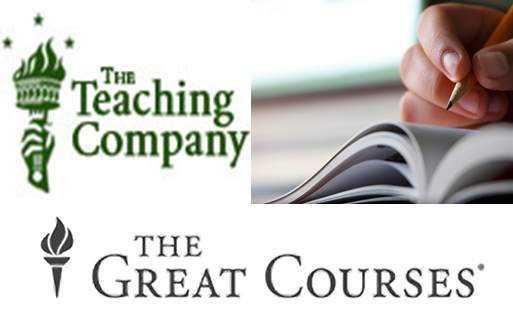
Great World Religions - The Religions of India [TTC Audio]
English | 1994 | 7 hrs and 5 mins | MP3 | 105 MB
Authors: Diana L. Eck, Teaching Company
Series: SuperStar teachers
Professor Diana Eck of Harvard University presents ten lectures that explore the historic interplay of India's major religions.
This fifth part dealing with the religions of India (hindu, buddhist, muslim and sikh) contains 10 lessons of about 45 minutes, each thought by Professor Diana Eck
Lesson 1. Religions of India : points of view -- Lesson 2. Creating a world : two cultures of Ancient India -- Lesson 3. Upanishads : teachings of wisdom -- Lesson 4. Mahavira and Buddha : their lives and legacies -- Lesson 5. Teachings of the Buddha : the way out of suffering -- Lesson 6. Bhagavad Gita : the field Dharma and Revolution of Bhakti -- Lesson 7. Through women's eyes : the Dharma and the Devi -- Lesson 8. Myth on earth : three tales of the faith of Hindu pilgrims -- Lesson 9. Sufis, Sants, and Sikhs -- Lesson 10. Ghandi : all religions are true
Code:
https://nitroflare.com/view/5EC0401AD8F153C/Great_World_Religions_-_The_Religions_Of_India.rar
Code:
https://rapidgator.net/file/8b952da239be9a8c384ada09ae3f08f8/Great_World_Religions_-_The_Religions_Of_India.rar.html
OP
Member
LEVEL 5
70 XP
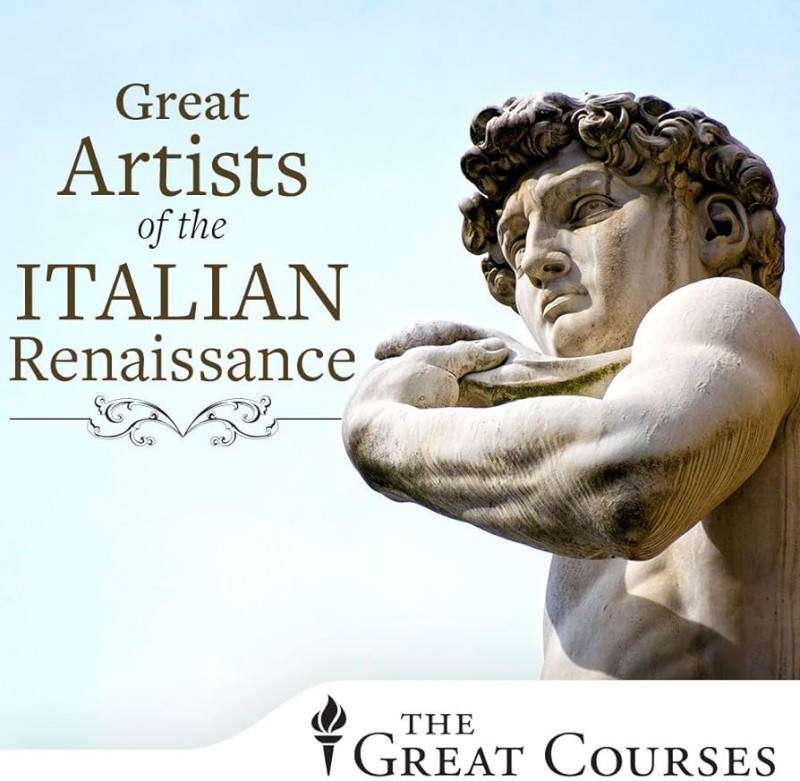
Great Artists of the Italian Renaissance [TTC Audio]
English | 1994 | 18 hrs and 12 mins | MP3 | 491 MB
MP3-MPEG-LAYER-3
Sample Rate 48khz-DVD Quality
Stereo
BITRATE 56kbps
RiverPast AudioConverter Pro version 6.1
Rip anonymous
Great Artists of the Italian Renaissance
(36 lectures, 30 minutes/lecture)
Course No. 7140
Taught by William Kloss
Independent Art Historian, The Smithsonian Associates, Smithsonian Institution
M.A., Oberlin College
" these Arts, in their highest province, are not addressed to the gross senses, but to the desires of the mind, to that spark of divinity which we have within ." Sir Joshua Reynolds, 1786
No era of artistic achievement is as renowned as the Renaissance, and no country holds a higher place in that period than Italy. The supreme works created in Florence, Rome, Venice, and other Italian cities by such masters as Leonardo da Vinci, Botticelli, Michelangelo, Raphael, and Titian have never been equaled and have established a canon of beauty that pervades Western culture to this day.
To view these works is to enter a world that is incomparably rich, filled with emotion and drama that is palpable, though sometimes mysterious to our modern sensibility.
To study these works with an expert is to penetrate that mystery and gain a new appreciation for how these masterpieces were created and what they meant to the artists and people of the time.
Experience the Vision of Great Art with an Expert Guide
Professor William Kloss is your guide through this visual feast in an artist-centered survey that explores hundreds of different paintings and sculptures by scores of different artists.
An Independent Art Historian, scholar, and curator, Professor Kloss is a frequent lecturer for the Smithsonian Institution s seminar and travel program. He has served on the Committee for the Preservation of the White House by presidential appointment since 1990, and he is the author of several books and exhibition catalogs.
Commenting on Kloss s eloquent writing, The Washington Post marveled that "his pointed and persuasive perceptions are not easily resisted."
Unlock the Mysteries of Renaissance Art
Take Botticelli s Primavera, a bewitching allegory of springtime featuring two gods, three goddesses, the three Graces, and Cupid, set in a lush orange grove. Its sheer beauty transfixes visitors to Florence s Uffizi Gallery, where it hangs today. But what does it mean?
Noting that scholars have endlessly debated the painting s symbolism, Professor Kloss directs your attention to a few intriguing details:
The orange tree foliage makes a halo around the central figure of Venus, connecting her with the Virgin Mary. According to Renaissance thought, Venus may also represent humanitas culture or civilization.
On the right, flowers float from the mouth of the nymph Cloris, and her finger is merging with a flower in the gown of Flora, goddess of spring. One is metamorphosing into the other as spring arrives in this ideal glade of divine love.
Meanwhile on the left, Mercury is waving his staff to dispel a tiny patch of clouds. He is clearing the atmosphere the intellect for the three Graces who represent culture and the arts.
Professor Kloss then points out another equally rich interpretation and concludes, "A bad artist could do terrible things with such a complex story, but fortunately a great artist was at hand to visualize this elaborate subject."
The same can be said for all of the artists in this course, and it is through their distinctive styles, innovations, and matchless skill that you learn about this remarkable period.
What is the Renaissance?
These lectures cover the art historical periods known as the Early Renaissance and the High Renaissance, which extended from about 1400 to about 1520. Italy is the first and principal location of the Renaissance, and it was in Florence that it took its deepest root.
Renaissance means rebirth, and it is the name given to the transition from medieval to modern times in Europe, when the rediscovery of ancient Greek and Roman culture sparked a creative revolution in the humanities, the sciences, and the arts.
Humanism, a philosophical, literary, and artistic ideal, went hand in hand with this rebirth, emphasizing the dignity and potential of man and inspiring secular studies, and the creation of art that reflected the forms and ideas of the classical world. Renaissance society and art remained permeated with religion.
In the arts, this revolution encompassed powerful new techniques for representing the human figure and the visible world, and also new attitudes about the role of the artist in society. From a modest rank as craftsman, the artist gradually rose to a status comparable to that of poets and philosophers.
Examine Works by More Than 40 Great Artists
The first 25 lectures examine the artists of Central Italy, where Florence is located. The focus then shifts to Northern Italy. You cover the works of more than 40 artists. Among the most famous are:
Filippo Brunelleschi and Donatello: One an architect, the other a sculptor, they were the principal founders of the Renaissance style. Florence cannot be properly understood without looking at Brunelleschi s buildings, notably his dome for the Florence Cathedral. The influence of Donatello s sculpture was unequalled before that of Michelangelo.
Masaccio: The greatest painter of the Early Renaissance is studied in two lectures, in which he is compared to Giotto, the great "proto-Renaissance" master of a century earlier.
Piero della Francesca: Now considered one of the greatest of Renaissance painters, he was primarily associated with smaller urban centers like Urbino and Arezzo, where he created the fresco cycle The Legend of the True Cross.
Botticelli: Two lectures are devoted to this master whose wistful grace gave way to anguished expression as the religious climate in Florence took a fanatical turn under the reformer Savonarola.
Leonardo da Vinci, Michelangelo, and Raphael: For many, this triumvirate is synonymous with the High Renaissance. Their influence and fame have scarcely waned from their day to our own. Seven lectures are devoted to their work.
Andrea Mantegna: Master painter in Padua and Mantua, his art has a sculptural quality combined with rich color and a spirit of pathos. He was also an innovator in spatial illusionism in painting.
Carpaccio and Gentile Bellini: This pair excelled in narrative cycles in which contemporary Venice is vividly rendered. They are included in an eight-lecture sequence on Venice, the proud center of culture in northern, Adriatic Italy.
Antonello da Messina and Giovanni Bellini: Both working in Venice, they achieved such brilliant effects with the new oil medium that they inspired many other artists to adopt it. Giovanni Bellini was the younger brother of Gentile.
Giorgione and Titian: From Giovanni Bellini s workshop came two artists who helped define the Venetian High Renaissance. Giorgione altered the development of Western art, despite his early death from the Plague, while Titian blended the achievements of Giorgione, central Italian painting, and his own coloristic genius into a style of stirring beauty.
Some of the Art You See
The visual content of this course puts it in a class with heavily illustrated art books. Some 500 images of paintings, sculptures, prints, drawings, maps, buildings, and architectural details are featured. Many works are explored in considerable depth, with searching commentary by Professor Kloss that is both enlightening and personal. For example:
Church of San Lorenzo, Brunelleschi: "Brunelleschi s architecture reflects the scale of the human being. I have a greater sense of calm and comfort and well-being in that church than any other Italian church until we get to the work of Palladio well over 100 years later. It s an extraordinary experience."
St. George, Donatello: "The widespread legs of the figure and the central axis of the shield lead us up to the head, the vigilant, intelligent head, a thinking head. We take it far too much for granted, but Donatello has been able to give the power of thought to the head of George."
Ginevra de Benci, Leonardo da Vinci: "The strangely unemotional character of the face, the dreamy eyes, don t really connect with ours. This seems to be more of a projection of Leonardo s own secretive personality than a record of the sitter s. I think that it is generally true of portrait artists that they project themselves to a large degree onto their sitters."
Sistine Chapel Ceiling, Michelangelo: "Do I think that the Sistine Ceiling was the victim of a poor or careless restoration? No, I do not; emphatically, I do not. These are the colors that we should have expected to see. These are in fact the colors of much later 16th-century Italian painting. We always knew that Michelangelo invented the poses of the human body that were used by everyone for the rest of the century. Now we know that he may have invented the colors as well."
Baldassare Castiglione, Raphael: "Look in his eyes. Look at the wonderful blue-green of his eyes against the flesh tones and against the grayish background. The color scheme of the whole thing is a flawless consonance of gray, black, flesh tones, of perfectly defined volumes, persuasive description, and in every sense it s the true likeness of the man. It is what we call a speaking likeness."
The Tempest, Giorgione: "This is one of the most puzzling paintings in art history. My preferred explanation: The soldier and the broken columns symbolize fortitude or constancy. The woman and child stand for Christian love. The threatening storm over the town and the country is a symbol of fortune or chance. What is distinctly uncommon here is the subordination of the emblematic devices to the evocative landscape. This is the first instance of Italian painting in which a landscape is given the principal role, not just a supporting role, but the principal role."
You discuss many other major masterpieces in detail, from Giotto s frescoes for the Arena Chapel and Ghiberti s bronze doors for the Florence Baptistery to Leonardo s Last Supper and Michelangelo s Last Judgment.
Terms and Techniques
Professor Kloss offers other insights as well. Did you know that it is incorrect to refer to Leonardo as "da Vinci," which is not his last name but the indication of his town of birth? Or that the Renaissance was put on hold for half a century due to the Black Death? Or that Renaissance marble sculpture was sometimes painted?
You also learn how to recognize saints from the symbols that accompany them: St. Paul by his sword, St. Peter by his keys, and St. Jerome by the stone in his hand with which he strikes himself in penance for his sins.
Of great use in your further studies are the terms and techniques that Professor Kloss explains:
In Italian, the 14th century is called the Trecento. The literal meaning is three hundred, but it is shorthand for the one thousand three hundreds. Likewise, the 15th century is called the Quattrocento, and the 16th the Cinquecento. These Italian terms are commonly used in art historical writing and speaking about Italian art.
Fresco means fresh in Italian. The technique involves painting on a shallow layer of freshly troweled wet plaster (the intonaco) with water-based pigments, which penetrate into the plaster. Rapid execution is required before the plaster sets overnight, allowing one working day. The area that can be covered is thus called a giornata (day, or day s work).
In linear or one-point perspective, the vanishing point corresponds to the spectator s viewpoint, and that is why the pictorial space can be felt as an extension of the viewer s real space. Leon Battista Alberti, the architect who first published a formulation of these principles in 1435, likened the picture surface to a window.
Drying oils such as linseed oil and walnut oil form a solid film when exposed to the air for long enough time. Because they dry slowly, they can be applied evenly over a wide surface. The color, bound in the oil, has a richness and a luminosity that comes from the translucency of the medium.
Uffizi, the name of the famous museum in Florence, means simply offices the original function of the museum building.
The Renaissance: 120 Years That Transformed Art
In the final two lectures, Professor Kloss looks at the Renaissance as a whole and surveys the political, social, and religious events of the early 16th century that brought profound change to Italy and the rest of Europe. He then examines how art inevitably changed as a result.
Altogether, the Renaissance lasted about 120 years, and the period of the High Renaissance a little over 40 years. No later Western art can be discussed without reference to this era especially as it matured and flourished in the cities of Italy.
Course Lecture Titles
Italy and the Renaissance
From Gothic to Renaissance
Brunelleschi and Ghiberti in Florence
Donatello and Luca della Robbia
Masaccio
Masaccio The Brancacci Chapel
Fra Angelico and Fra Filippo Lippi
Three Specialists
Donatello and Padua
Piero della Francesca Individual Works
Piero della Francesca Legend of the True Cross
Pageant of Life in Renaissance Florence
The Heroic Nude
Sculpture Small and Large
Botticelli Spirituality and Sensuality
Botticelli and the Trouble in Italy
Filippino Lippi
Leonardo da Vinci Portraits and Altarpieces
Leonardo da Vinci The Last Supper
Michelangelo Florentine Works
Michelangelo Roman Projects
Michelangelo The Sistine Chapel Ceiling
Raphael Madonnas and Portraits
Raphael History Paintings
Urbino Microcosm of Renaissance Civilization
Andrea Mantegna in Padua and Mantua
Venice Byzantine, Gothic, and Renaissance
Celebrating the Living City
Giovanni Bellini The Early Years
Antonello da Messina and Giovanni Bellini
Giovanni Bellini The Late Years
Giorgione
Giorgione or Titian?
Titian The Early Years
A Culture in Crisis
The Renaissance Reformed
Code:
https://nitroflare.com/view/A9E534B3D350693/Great_Artists_of_the_Italian_Reniassance.rar
Code:
https://rapidgator.net/file/4ebfdfc2e343fa88515f059ea1e6167e/Great_Artists_of_the_Italian_Reniassance.rar.html
OP
Member
LEVEL 5
70 XP
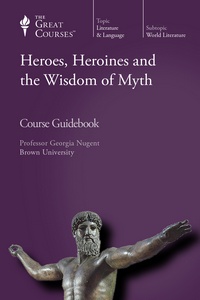
Heros, Heroines and the Wisdom of Myth [TTC Audio]
English | 1991 | 5 hrs and 37 mins | MP3 | 314 MB
TTC - The Teaching Company
Heroes, Heroines and The Wisdom of Myth
Lecturer, S. Georgia Nugent, Princeton University
Teaching Company, Chantilly, VA, 1991
Out of Print
Summary: A series of lectures on various aspects of classical and modern mythology,
seen from different psychological, historical, and linguistic perspectives, focusing
on how modern people can relate to and interpret myths.
Contents:
01-08 - Definition and Interpretation: What is a Myth?
02-08 - Definition and Interpretation: How Does it Mean?
03-08 - The Creation of Women
04-08 - The Invention of Sexuality
05-08 - The Heroic Ideal
06-08 - The Heroic Career
07-08 - The Women in the House
08-08 - Who Knows if Death be Life?
Code:
https://nitroflare.com/view/FBB18D914183E84/Heroes-_Heroines-_and_the_Wisdom_of_Myth.rar
Code:
https://rapidgator.net/file/2cbca95b4cccf151c203a884b0ad928d/Heroes-_Heroines-_and_the_Wisdom_of_Myth.rar.html
OP
Member
LEVEL 5
70 XP
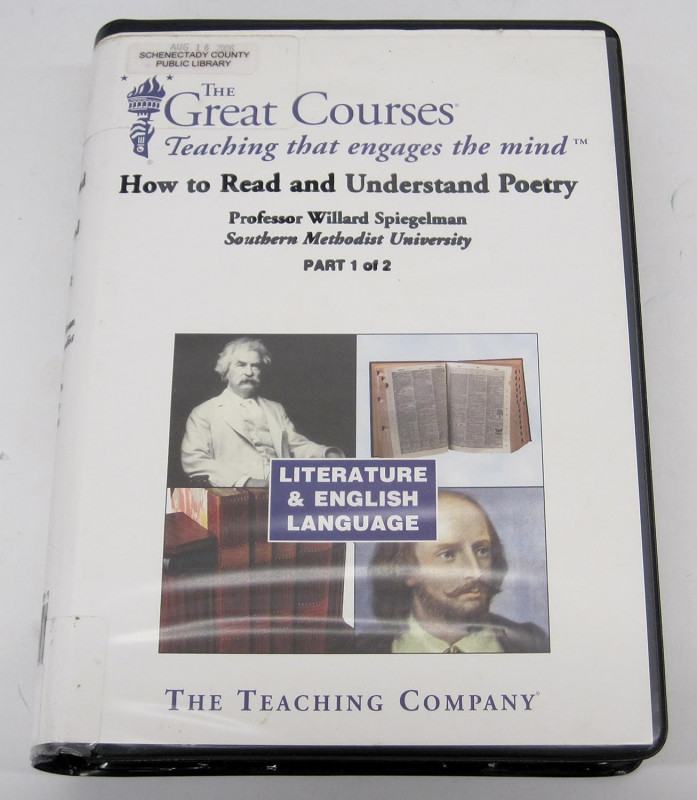
How to Read and Understand Poetry [TTC Audio]
English | 1999 | 12 hrs and 20 mins | MP3 | 340 MB
Covers a range of poems, from Renaissance England to contemporary America, focusing on poetic techniques, patterns, habits, and genres, with a special concern for the three areas that define what poetry is and what distinguishes it from other kinds of literary utterance: figurative language, music and sound, and tone of voice
Two-part CD set in two containers (each 20 cm.), 6 CDs per container. Plus 1 separate "Course Guidebook."
Compact discs
Twenty-four lectures by Professor Willard Speigelman, Southern Methodist University
Statement of responsibility from container
Includes bibliographical references in accompanying guidebook
What to look (and listen) for in poems -- Memory and composition -- Poets look at the world -- Picturing nature -- Metaphor and metonymy I -- Metaphor and metonymy II -- Poetic tone -- The uses of sentiment -- The uses of irony -- Poetic forms and meters -- Sound effects -- Three 20th-century villanelles -- Free verse -- The English sonnet I -- The English sonnet II -- The enduring sonnet -- Poets thinking -- The greater Romantic lyric -- Poets thinking: some 20th century versions -- Portrayals of heroism -- Heroism: some 20th century versions -- Poems talking to (and for) works of art -- Echoes in poems -- Farewells and falling leaves
Professor Willard Spiegelman, Southern Methodist University
Code:
https://nitroflare.com/view/D4D1D7BFBDF87F2/How_to_Read_and_Understand_Poetry.rar
Code:
https://rapidgator.net/file/b6aade689f2f518031271442c4ce091c/How_to_Read_and_Understand_Poetry.rar.html
OP
Member
LEVEL 5
70 XP
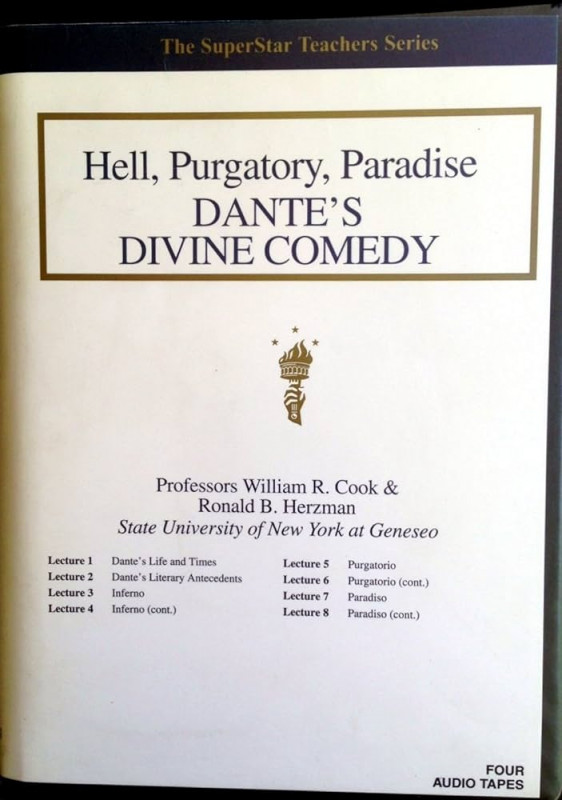
Hell, Purgatory, Paradise: Dante's Divine Comedy [TTC Audio]
English | 1995 | 12 hrs and 14 mins | MP3 | 252 MB
William R. Cook; Ronald B. Herzman
Published by The Teaching Company, 1995
Hell, Purgatory, and Paradise - Dante's Divine Comedy
01 - Reading the Poem - Issues and Editions
02 - A Poet and His City - Dante's Florence
03 - Literary Antecedents, I
04 - Literary Antecedents, II
05 - Abandon Every Hope, All You Who Enter
06 - The Never-Ending Storm
07 - Heretics
08 - The Seventh Circle - The Violent
09 - The Sin of Simony
10 - The False Counselors
11 - The Ultimate Evil
12 - The Seven-Story Mountain
13 - Purgatory's Waiting Room
14 - The Sin of Pride
15 - The Vision to Freedom
16 - Homage to Virgil
17 - Dante's New Guide
18 - Ascending the Spheres
19 - An Emperor Speaks
20 - The Circle of the Sun - Saints and Sages
21 - A Mission Revealed - Encounter with an Ancestor
22 - Can a Pagan Be Saved
23 - Faith, Hope, Love, and the Mystic Empyrean
24 - In My End Is My Beginning
Code:
https://nitroflare.com/view/E20F9600467CDED/Hell%2C_Purgatory%2C_and_Paradise_-_Dante's_Divine_Comedy.rar
Code:
https://rapidgator.net/file/ab1d9aa59c49808d8f87747d7c014239/Hell,_Purgatory,_and_Paradise_-_Dante's_Divine_Comedy.rar.html
OP
Member
LEVEL 5
70 XP
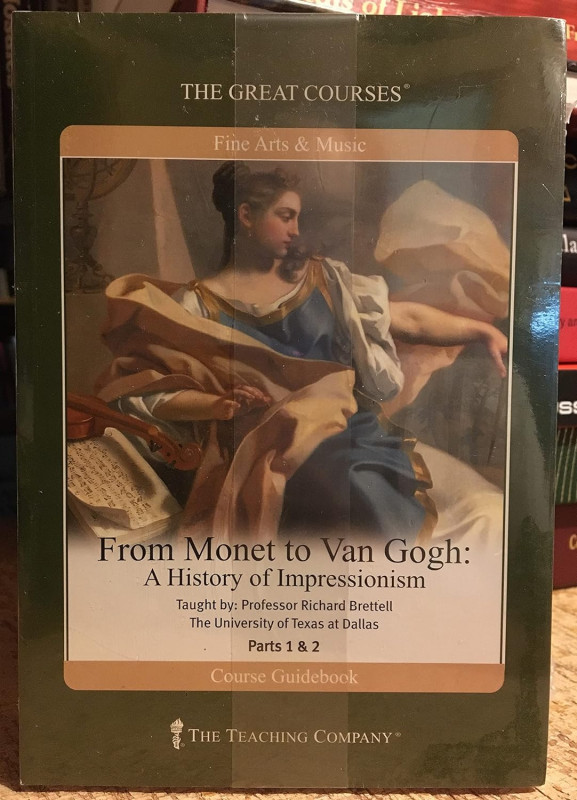
From Monet to Van Gogh: A History of Impressionism [TTC Audio]
English | 2004 | 12 hrs and 9 mins | MP3 | 417 MB
Richard Brettell
They appeared in a period of upheaval. They displayed their shocking and startling new paintings in a series of exhibitions from 1874 to 1886. And by the 1890s, this coalition of artists who rebelled against the formality of the French Academy had created the most famous artistic movement in history. They were the Impressionists, and renowned art critic, historian, and professor Richard Brettell is your expert guide to a group of artists who created a new, intensely personal vision of the world. Who were the Impressionists? What's the difference between a Manet and a Monet? And why is this 19th-century style still so appealing? The 24 masterful lectures of From Monet to Van Gogh: A History of Impressionism explain the Impressionist revolution with a deft mix of history, biography, and art. One of the legacies of Impressionism is to leave the viewer with a profound sense of life-of life captured on the canvas, through motion, light, and color, and of life lived by these remarkable artists, always seeking to experience and to learn, to better capture the reality before their eyes. This course is an absorbing lesson in the marvelous cultural, historical, and visual experiences that great paintings provide.
LIFETIME MANUFACTURER WARRANTY. Your satisfaction is important to us, and we at The Great Courses offer a lifetime replacement warranty to purchasers of our products from The Great Courses on Amazon - if a DVD or CD disc ever breaks, warps, or gets damaged, we will replace it free of charge. If you have any concerns with your product, or want to request a replacement, please contact The Great Courses through our Amazon storefront for more information.
From Monet to Van Gogh - A History of Impressionism
01. The Realist and the Idealist
02. Napoleon III's Paris
03. Baudelaire and the Definition of Modernism
04. The Shock of the New
05. The Painters of Modern Life
06. Pierre-Auguste Renoir
07. Impressions in the Countryside
08. Paris under Siege
09. The First Exhibition
10. Monet and Renoir in Argenteuil
11. C zanne and Pissarro in Pontoise
12. Berthe Morisot
13. The Third Exhibition
14. Edgar Degas
15. Gustave Caillebotte
16. Mary Cassatt
17. Manet's Later Works
18. Departures
19. Paul Gauguin
20. The Final Exhibition
21. The Studio of the South Van Gogh and Gauguin
22. Henri de Toulouse-Lautrec
23. The Nabis
24. La Fin
Code:
https://nitroflare.com/view/E066402FFEA1BAF/From_Monet_to_Van_Gogh_-_A_History_of_Impressionism.rar
Code:
https://rapidgator.net/file/13c091711fcbf8981b2cb34f9d5a4bab/From_Monet_to_Van_Gogh_-_A_History_of_Impressionism.rar.html
OP
Member
LEVEL 5
70 XP
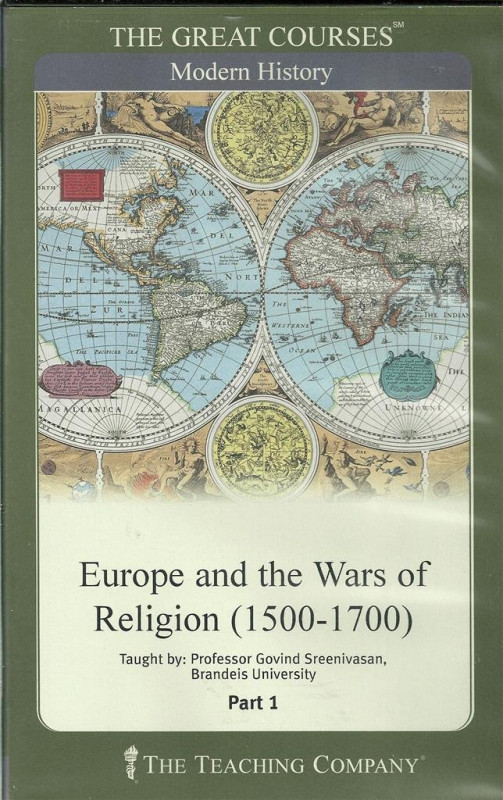
Europe and the Wars of Religion (1500-1700) [TTC Audio]
English | 2003 | 12 hrs and 7 mins | MP3 | 291 MB
Lectures given by Professor Govind Sreenivasan, Brandeis University
A twenty-four lecture course that examines European history during an era of intense religious and political violence. The course is organized around five major conflicts: the French Wars of Religion (1562-1598), the Revolt of the Netherlands (1566-1609), the Thirty Years' War in central Europe (1618-1648), the English Civil War (1642-1649) and Glorious Revolution (1688), and the emergence of French absolutism (1610-1715).
part 1. lecture 1. Ideologies of political obedience ; lecture 2. The ideology of disobedience ; lecture 3. Monarchy and society in France ; lecture 4. The Huguenots ; lecture 5. From early war to the Catholic League ; lecture 6. The Catholic League and Henry IV ; lecture 7. The Spanish monarchy ; lecture 8. The revolt of the Netherlands : beginnings ; lecture 9. The first revolt of the Netherlands ; lecture 10. The rebellion widens ; lecture 11. Triumph of the Dutch Republic ; lecture 12. The art of war and the logistics of victory. part 2. lecture 13. The politics of the Holy Roman Empire ; lecture 14. Bohemian revolt and Habsburg victory ; lecture 15. The march of the Swedes ; lecture 16. The intervention of France ; lecture 17. Stuart England ; lecture 18. Charles I and the English Civil War ; lecture 19. Republic to Restoration (1647-1660) ; lecture 20. Restoration to Glorious Revolution ; lecture 21. Royal power in 17th-century France ; lecture 22. The Fronde ; lecture 23. Princes and peasants ; lecture 24. Conclusion: the France of Louis XIV
Code:
https://nitroflare.com/view/FDFE252E80F72DD/Europe_and_the_Wars_of_Religion_(1500-1700)_(Govind_Sreenivasan%2C_TTC)__FhG_52_js_.rar
Code:
https://rapidgator.net/file/68556d6cdc87371da95861be570e7a93/Europe_and_the_Wars_of_Religion_(1500-1700)_(Govind_Sreenivasan,_TTC)_[FhG_52_js].rar.html
OP
Member
LEVEL 5
70 XP
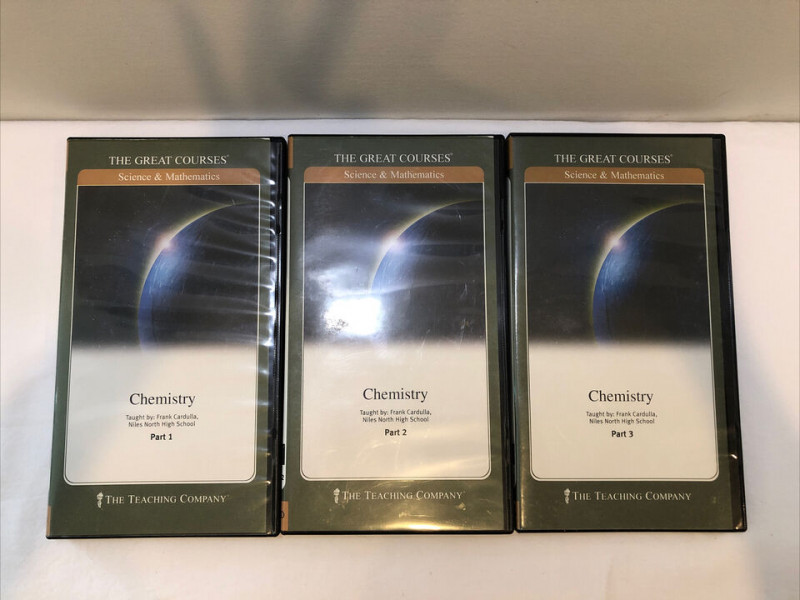
High School Level Chemistry
English | 1994 | 14 hrs and 54 mins | MP3 | 205 MB
Worst Subject?
Chemistry teachers will tell you that there is an experience they have all had many times. Someone will ask them, "What do you do for a living?" and when they reply, "I'm a chemistry teacher," the all-too-common response is:
"That was my worst subject!"
Why is that? Is high school chemistry just so intrinsically difficult that only students with great intellectual gifts are capable of succeeding without heroic efforts?
"The Easiest Class in School"
Frank Cardulla doesn't believe that for a moment, and he will hopefully convince you, as he has thousands of high school students, that "chemistry is the easiest class in school."
Students often claim it is the "math" that is difficult. But high school chemistry normally only demands that students be able to add, subtract, multiply, and divide numbers and do some simple algebra. Calculators take care of the first four, and most students can handle the latter.
It's not the "math" that some students find difficult. It's the requirement to engage in what might be called "quantitative reasoning" the ability to take the numbers presented in what are often called "word" or "story" problems and put them together in the proper way to arrive at the correct answer. Should the numbers be multiplied or divided? And if divided, how do you know which number to put in the numerator and which in the denominator?
This difficulty is far and away what "turns off" many students to chemistry, and it is addressing this difficulty that is the focus of these chemistry lectures.
The Hardest Parts Have Simple Answers
As Mr. Cardulla puts it, "My goal in these lectures is not to quickly cover every topic that is typically included in most high school chemistry courses. Most students don't need a lot of help learning element symbols or memorizing definitions. With reasonable effort they can learn the basic structure of atoms and how the Periodic Table works. That isn't the stumbling block. It's quantitative reasoning solving those 'story' problems. It's the mole concept and its application to stoichiometry and molarity and equilibrium. This is what frustrates so many, because they think solving these kinds of problems requires either some exceptional intellect or some kind of 'special' approach totally divorced from the kind of quantitative reasoning we all use naturally and often effortlessly in everyday life. It doesn't."
He justifies this statement by showing how "chemical" reasoning is nothing more than an extension of the kind of quantitative reasoning that most of us use every day. Once this base is firmly established, this simple, natural reasoning is then applied to most of the important problem-solving situations that face high school chemistry students, from density, to the mole, to molarity, stoichiometry, and equilibrium.
Genuine Understanding That Lasts
Cardulla refuses to have students learn mathematical "gimmicks" that allow them to obtain correct answers to simple problems without any real understanding, only to have them fall apart later when problems are encountered that demand understanding.
Instead, he establishes a firm foundation a foundation based on a real and deep understanding of basic concepts and how one can apply the kind of simple, natural quantitative reasoning we all use every day to what are truly simple chemistry problems once this basic understanding is established. It is this basis of true understanding that makes chemistry "the easiest class in school."
Mr. Cardulla has published articles and given numerous presentations about this simple, logical approach, and the achievements of his students bear testimony to its effectiveness. He has received citations from institutions such as MIT and the University of Chicago for being named "most influential teacher" by attending students.
He is the recipient of numerous teaching awards. Included are the Davidson Award, a Presidential Award for Science Teaching, the National Catalyst Award for Outstanding Chemistry Teaching, and the National James Bryant Conant Award. The latter two are given to only one high school chemistry teacher in the entire United States each year.
Throughout this tutorial, Mr. Cardulla uses, in equal measure, the blackboard, a flipchart on an easel, and computer-generated graphic screens to illustrate his lessons, which also include about a dozen physical demonstrations.
Available on DVD and Videotape
Due to the highly visual nature of its subject matter, this course is available only on videotape and DVD.
High School Level Chemistry
(30 lectures, 30 minutes/lecture)
Course No. 111
Taught by Frank Cardulla
Retired, Niles North High School, Chicago, Illinois
M.S., University of Illinois
Course Lecture Titles
Introduction and Philosophy
Quantitative Reasoning in Life and Chemistry (Part I)
Quantitative Reasoning in Life and Chemistry (Part II)
Density
The SI (Metric) System of Measurement
Converting between Systems of Measurement
The Mole Concept: Preliminary Ideas
The Mole
Solving Mole Problems
Avogadro's Hypothesis and Molar Volume
Percent Composition and Empirical Formulas
Solving Empirical Formula Problems
Writing and Balancing Chemical Equations
An Introduction to Stoichiometry
Stoichiometry Problems
Advanced Stoichiometry
An Introduction to Molarity
Solving Molarity Problems
Additional Molarity Problems
Basic Concepts of Chemical Equilibrium (Part I)
Basic Concepts of Equilibrium (Part II)
Interpreting an Equilibrium Constant
Le Chatelier's Principle (Part I)
Le Chatelier's Principle (Part II)
An Introduction to Equilibrium Problems
The Self-Ionization of Water
Strong Acids and Bases (Part I)
Strong Acids and Bases (Part II)
Weak Acids and Bases
Solubility Equilibria
Code:
https://nitroflare.com/view/9647A3FC0E4BBAD/High_School_Level_-_Chemistry_(30_lectures)_-_Frank_Cardulla.rar
Code:
https://rapidgator.net/file/dea1f0cf572bab16b4782b621599e294/High_School_Level_-_Chemistry_(30_lectures)_-_Frank_Cardulla.rar.html